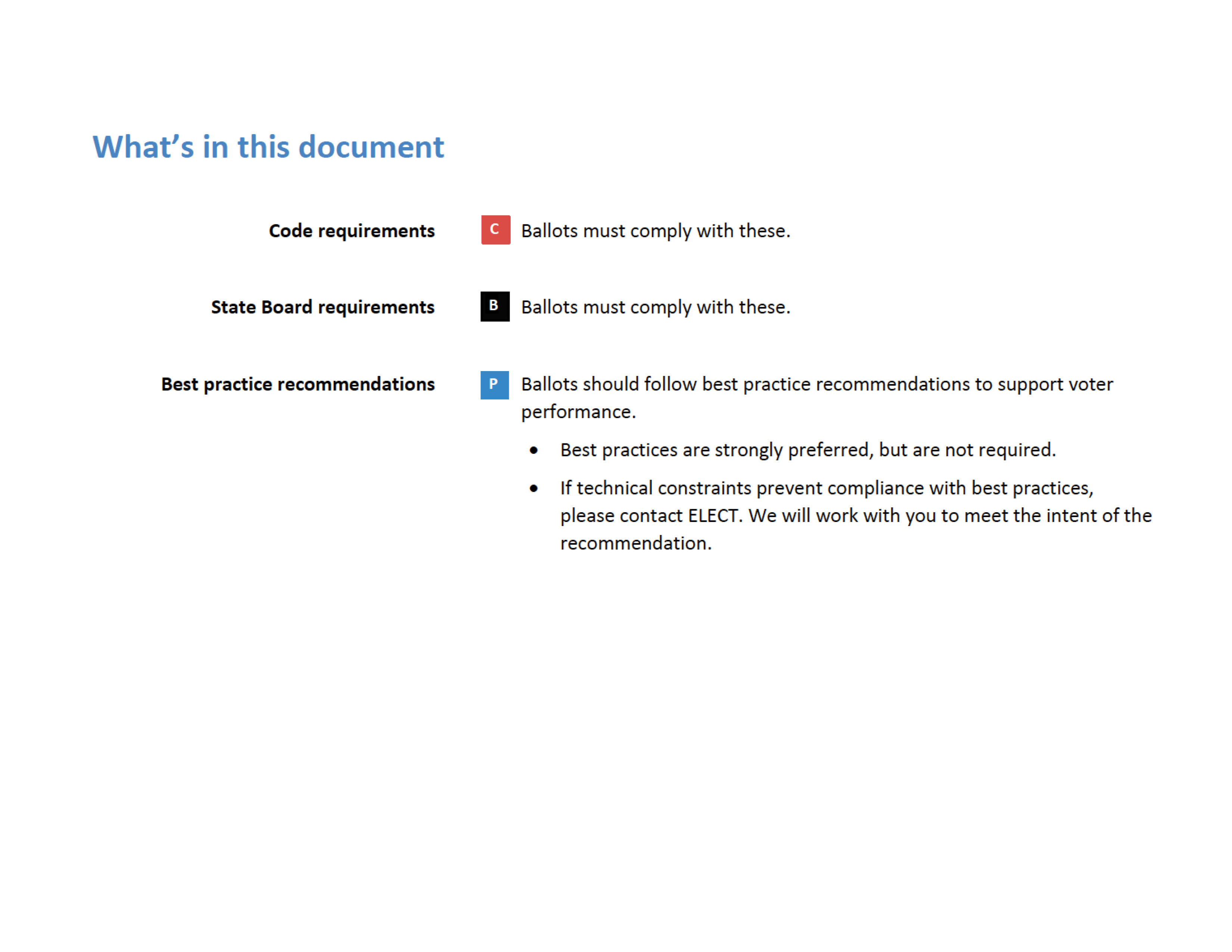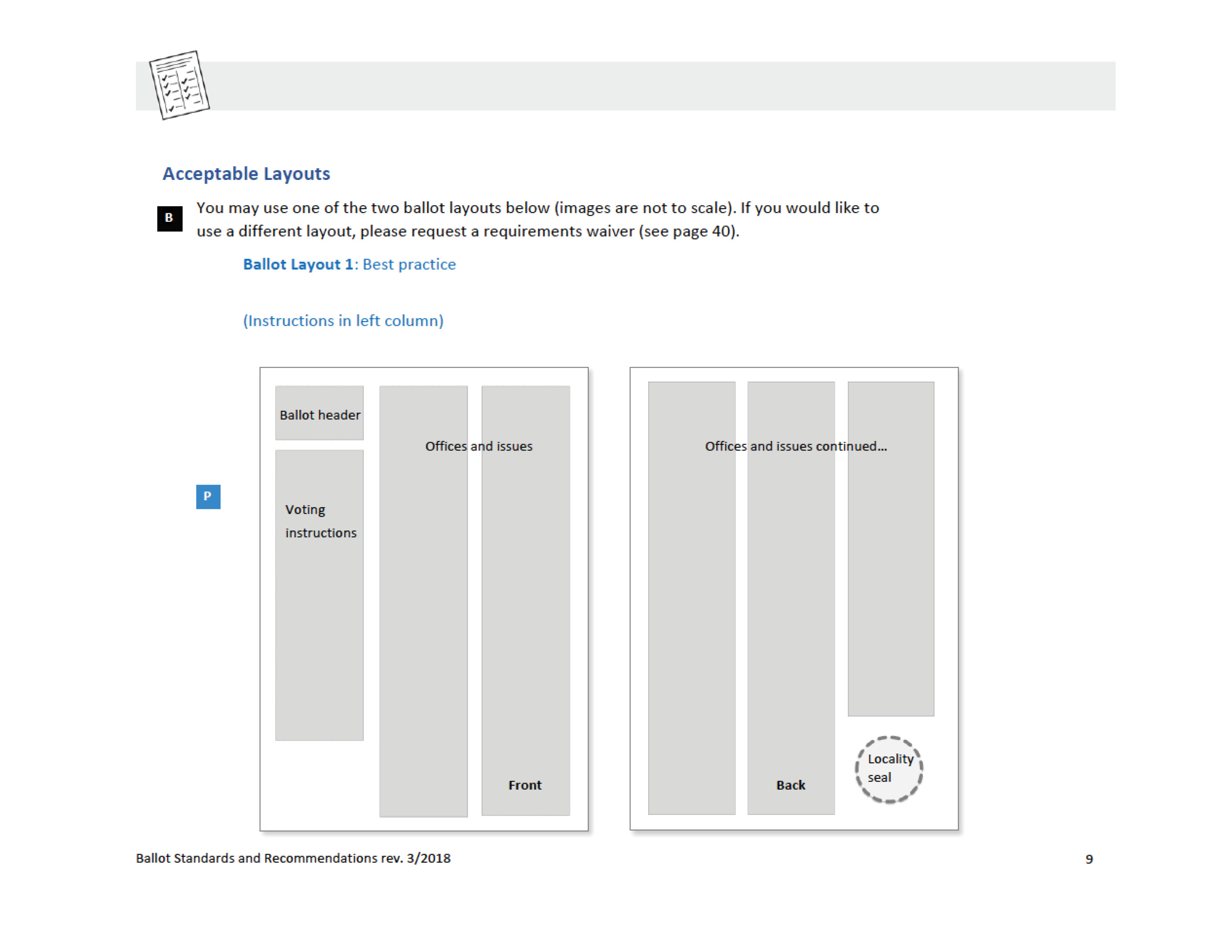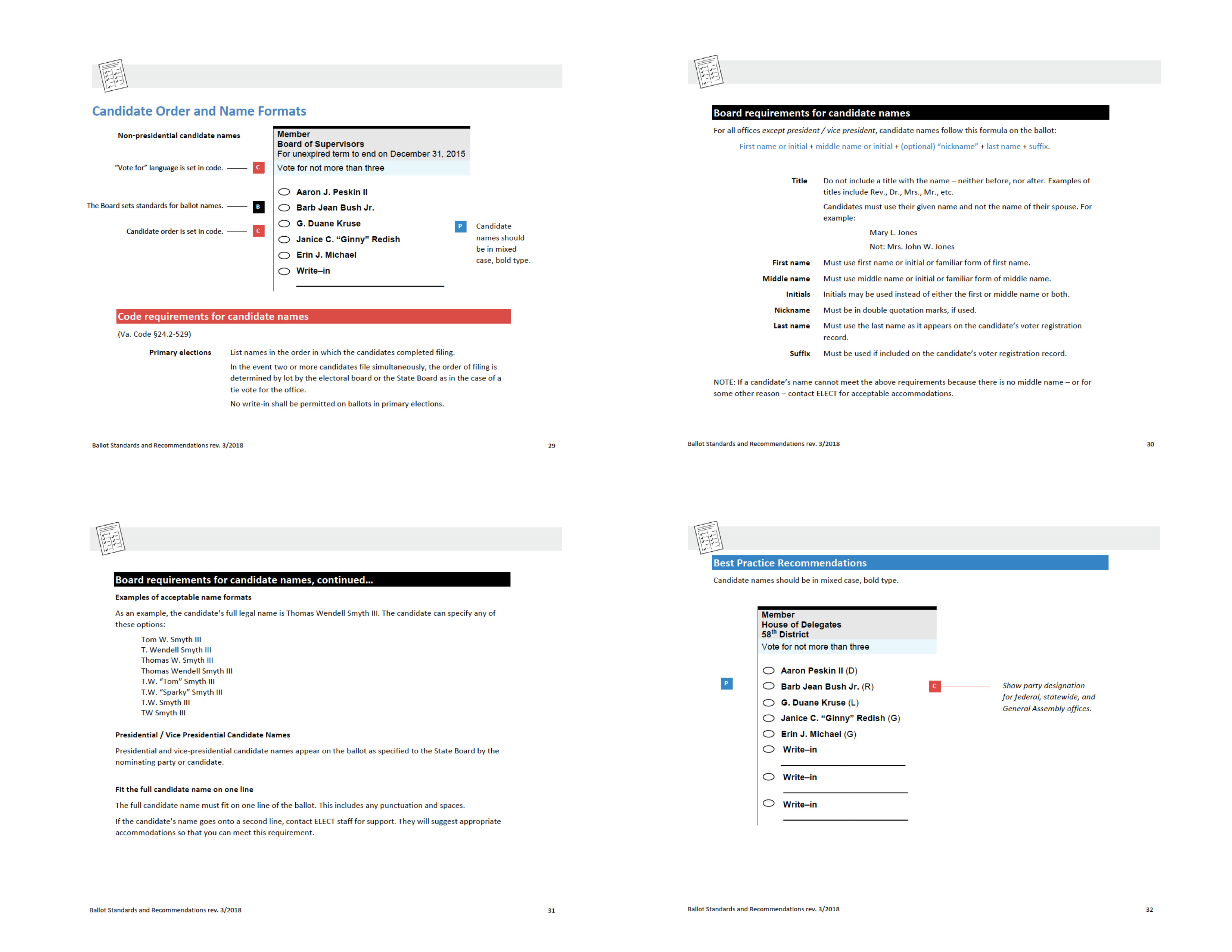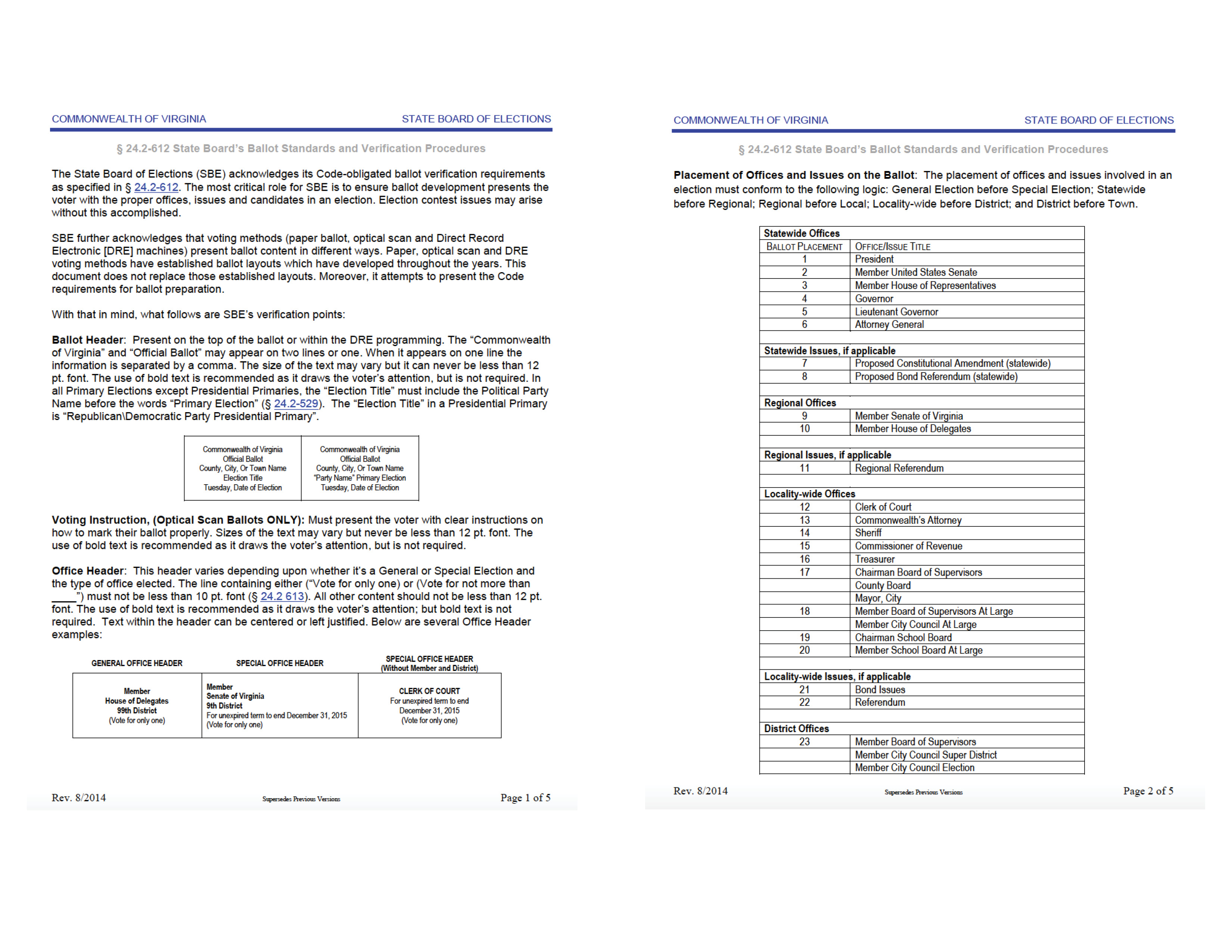Updated ballot standards for Virginia
Over the last year or so, the Virginia Department of Elections (ELECT) has reviewed processes, forms, and notifications to get everything updated for new voting systems and support changes in legislation. Lately, they’ve focused on efforts to refresh the ballot standards that vendors and general registrars use to lay out ballots across the Commonwealth. The new ballot standards will go into effect for the November 2018 elections.
The goals were to
- Update to remove references to old voting systems.
- Make it easier for vendors and registrars to implement the standards.
- Ensure uniformity across the 133 localities.
- Update with evidence-based best practices that make it more likely voters will vote the way they intend.
- Make the ballot proofing process faster and easier for localities, the vendors, and ELECT.
The Center for Civic Design worked with ELECT, registrars, and vendors to develop guiding principles and operationalize requirements that are in law, requirements instituted by the State Board of Elections, and evidence-based best practices. Together, we sought to
- ensure that ballot designs reflect current election code and work in approved voting systems
- implement requirements and best practices that are based on research and credible sources, such as the Election Assistance Commission
- create a document that reflects, by example, the best practices of usability and plain language
- make it as easy as possible for localities and the vendors to do the best design for voters.
The result is an easy-to-follow document with clear examples showing the requirements and optional best practices that are implementable across voting systems.
The State Board of Elections adopted the revised ballot standards on March 23, 2018 after brief, positive discussion. The standards will go into effect for ballots created for the 2018 midterm elections.
More reading
- Field Guide 01: Designing usable ballots
- Field Guide 02: Writing instructions voters understand
- Virginia Ballot Design Standards
- Before and after in the Virginia State Board of Elections meeting materials
- Virginia to adopt new ballot guidelines after confusing 2017 elections (WTOP Virginia, March 14, 2018)





